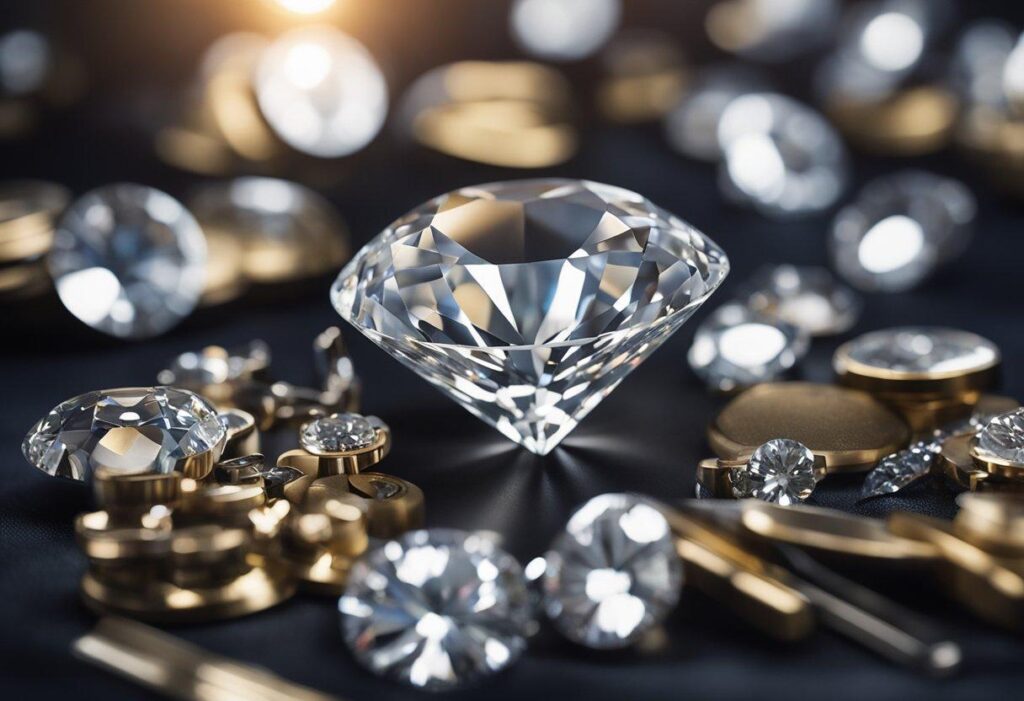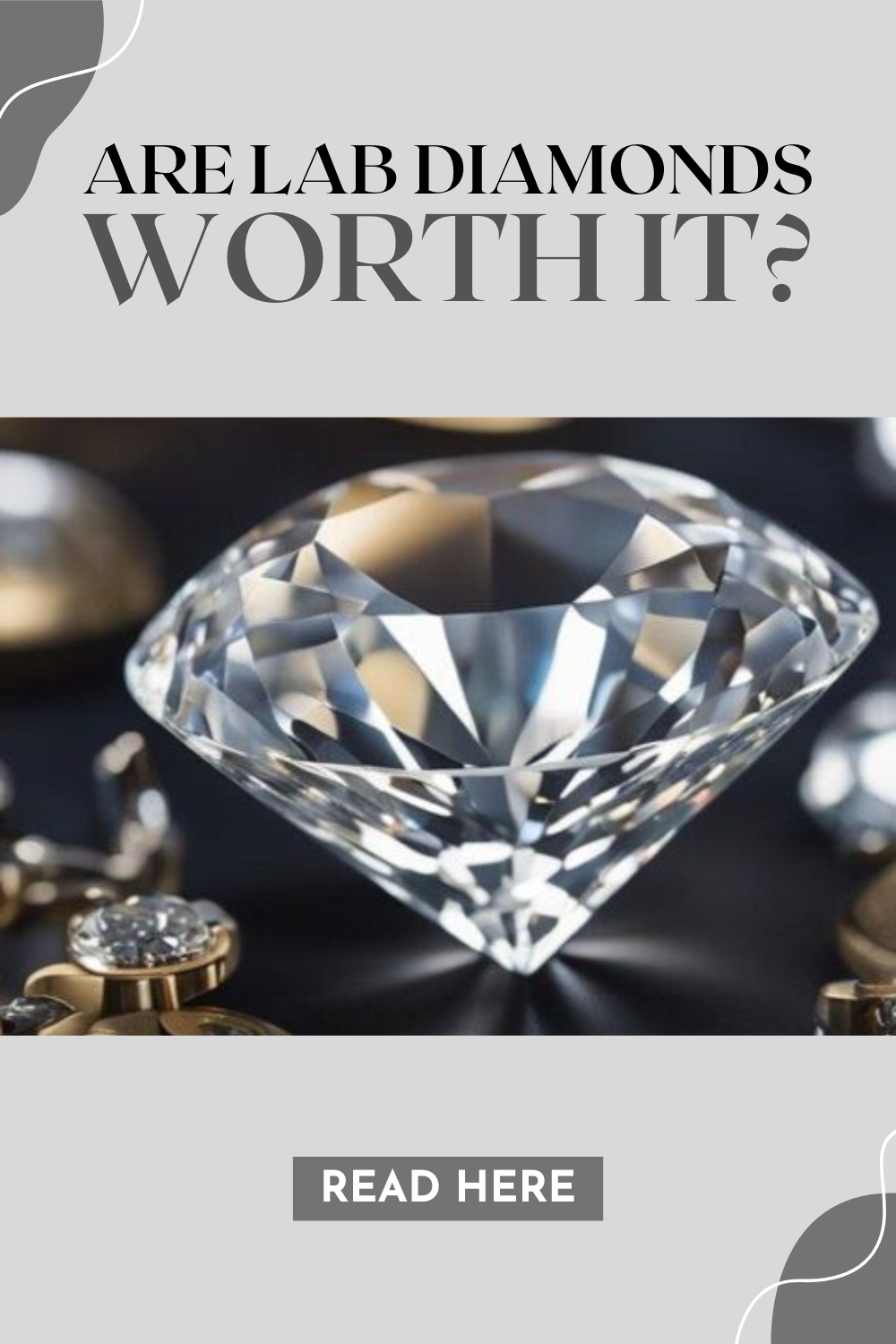Lab Diamonds: Are They Worth the Investment?

Are They Worth It?
Lab diamonds have become increasingly popular in recent years as an alternative to traditional mined diamonds.
These diamonds are created in a laboratory setting using advanced technological processes, and they are virtually identical to natural diamonds in terms of their chemical and physical properties.
However, the question remains: are lab diamonds from companies like Zen Moissanite worth the investment?
One of their primary advantages is their value. Lab-created diamonds are generally less expensive than natural diamonds. It makes them a more affordable option for those who want the look and feel of a diamond without the high price tag.
Additionally, they are ethically and environmentally responsible. They do not require mining or contribute to the destruction of natural habitats.
Despite their lower cost and ethical advantages, some people may still question whether lab diamonds are worth it.
While they are chemically and physically identical to natural diamonds, they may not hold the same sentimental value as a diamond.
Especially ones that have been passed down through generations or mined from the earth.
Ultimately, the decision to invest in a lab diamond comes down to personal preference and values.

Understanding Lab Diamonds
Lab-grown diamonds, also known as synthetic diamonds, are created using advanced technological processes that simulate the natural diamond formation process.
These diamonds have been gaining popularity in recent years as an ethical and sustainable alternative to mined diamonds.
In this section, we will explore the creation processes, physical and optical properties, and certification and quality standards of lab diamonds.
Creation Processes
There are two main processes used to create them. High Pressure High Temperature (HPHT) and Chemical Vapor Deposition (CVD). HPHT involves placing a diamond seed in a press and subjecting it to extreme heat and pressure. While, CVD involves growing a diamond layer on a substrate through the use of a gas mixture.
Both processes produce high-quality diamonds with similar physical and optical properties to natural diamonds.
Physical and Optical Properties
They have the same physical and optical properties as natural diamonds. This includes cut, color, clarity, shape, sparkle, fire, brilliance, and symmetry.
They are graded using the same standards as natural diamonds and can be certified by reputable gemological laboratories such as the Gemological Institute of America (GIA).
However, lab diamonds may contain inclusions or other impurities that can affect their quality and value.
Certification and Quality Standards
Certification is essential when purchasing a lab diamond to ensure that it meets the highest quality standards.
The GIA and other reputable gemological laboratories offer grading reports that provide detailed information about a diamond’s cut, color, clarity, and carat weight.
It is crucial to purchase lab diamonds from reputable dealers who can provide certification and guarantee the diamond’s quality.
In conclusion, they offer a sustainable and ethical alternative to mined diamonds. They are created using advanced technological processes that simulate the natural diamond formation process.
Also, they have the same physical and optical properties as natural diamonds.
When purchasing a lab diamond, it is essential to ensure that it has been certified by a reputable gemological laboratory and purchased from a reputable dealer.

Comparing Lab Diamonds and Natural Diamonds
Environmental and Ethical Considerations
One of the main advantages of lab-grown diamonds is their lower environmental impact compared to mined diamonds.
Lab diamonds are created in a controlled environment, which reduces the need for extensive mining and transportation. They also have a lower carbon footprint and do not contribute to the destruction of natural habitats.
In terms of ethics, lab diamonds are generally considered to be more ethical than mined diamonds. Mined diamonds have a history of being associated with human rights abuses and conflict, also known as blood diamonds. They are conflict-free and do not contribute to these issues.
Market Value and Resale Prospects
They are generally more affordable than natural diamonds, making them a popular choice for those on a budget.
However, they also have a lower resale value compared to natural diamonds. This is because natural diamonds have a long history of being used as a store of value and a hedge against inflation.
Investment value is another factor to consider. While natural diamonds have a proven track record of holding their value over time, lab diamonds are a relatively new addition to the market and their investment potential is not yet fully understood.
Aesthetics and Craftsmanship
Lab diamonds are virtually identical to natural diamonds in terms of appearance and composition. They are made of the same material and have the same physical and chemical properties. However, some people argue that natural diamonds have a unique character and charm that cannot be replicated by lab diamonds.
Craftsmanship is another factor to consider. Both natural and lab diamonds can be used in fine jewelry and engagement rings.
Though, the craftsmanship of the jewelry itself is what sets it apart. Skilled jewelers can create stunning pieces of jewelry using either type of diamond.
Overall, lab diamonds offer a more environmentally friendly and ethical alternative to natural diamonds.
Unfortunately, their market value and resale prospects are not yet fully established. When it comes to aesthetics and craftsmanship, both types of diamonds have their own unique qualities.
Economic and Practical Aspects
Cost-Benefit Analysis
When it comes to lab-grown diamonds, one of the biggest advantages is the cost savings. These diamonds are significantly cheaper than their natural counterparts.
With some estimates suggesting that they can be up to 30% less expensive. This makes them a great option for those on a budget or looking for an affordable alternative to traditional diamonds.
In addition to the initial cost savings, lab-grown diamonds can also be more valuable in the long run. Because they are made in a controlled environment, they are often of a higher quality and have fewer imperfections than natural diamonds.
This means that they may hold their value better over time and could even be considered an investment.
Suitability for Different Occasions
While lab-grown diamonds are a great option for engagement rings and wedding bands, they are also suitable for a variety of other occasions.
Because they are customizable and come in a range of sizes and shapes, they can be used in a variety of jewelry designs, from simple stud earrings to elaborate necklaces.
You May Also Like:
- Unveiling the Mysteries Behind Four Precious Gemstones
- The Most Beautiful Gemstones to Give As Gifts
- The Best Gemstones for the Day of Love
In addition, lab-grown diamonds can be a great option for those who want to save money without sacrificing style or quality.
They offer all the beauty and brilliance of natural diamonds at a fraction of the cost, making them a great choice for those who want to get the most value for their money.
Overall, lab-grown diamonds are a great option for those looking for an affordable, high-quality alternative to traditional diamonds.
With their cost savings, investment potential, and suitability for a variety of occasions, they are a smart choice for anyone looking to get the most value for their money.
Are lab diamonds worth it?
Leave a comment below!
— Jennifer
PIN FOR LATER:
I am a girl from the UK with a lot of thoughts. I left the rat race of the corporate and marketing world to be my own boss. I write about life, finances, home design, fashion, and more. Hoping to inspire people every day. I’m a writer, a reader, and an old soul.







